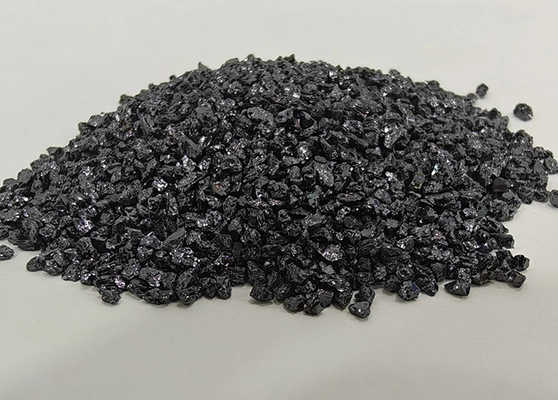What is Carborundum Used For?
Quick Answer: Carborundum is the trade name for silicon carbide (SiC), one of the hardest synthetic materials. It is mainly used as abrasives (grinding wheels, sandpapers, polishing pastes), refractories & ceramics (kiln furniture, seals, bearings), and advanced applications including semiconductors, automotive brakes, aerospace structures, energy systems, and filtration. Its hardness, thermal conductivity, and chemical resistance make it indispensable across industries.
Understanding Carborundum
Carborundum is the historical name for silicon carbide (SiC), discovered in 1891 and first commercialized as an abrasive by the Carborundum Company. Today the term is still used widely in trade for SiC powders and grains.
Key Properties & Parameters (3C/4H/6H Polytypes)
| Property | Black SiC | Green SiC | 3C-SiC | 4H-SiC | 6H-SiC |
|---|---|---|---|---|---|
| Mohs Hardness | ≈9.2 | ≈9.3 | ≈9.3 | ≈9.3 | ≈9.3 |
| Density (g/cm³) | 3.20–3.25 | 3.21–3.22 | |||
| Bandgap | — | ~2.3 eV | ~3.2 eV | ~3.0 eV | |
| Uses | Grinding, blasting | Lapping, precision grinding | MEMS | Power devices | Power devices |
Manufacturing Routes & Supplied Forms
- Acheson Process (quartz + carbon, resistance furnace → abrasive grains)
- Reaction-bonded, sintered, or CVD SiC (engineering ceramics)
- Electronic-grade single crystals (4H/6H wafers, epitaxy)
- Commercial supply forms: macrogrits (F12–F220), micropowders (F240–F5000), aggregates (0–25 mm)
Main Applications of Carborundum
Abrasives
Grinding wheels, sanding papers, blasting media, polishing pastes for metal, stone, glass, and composites.
Refractories & Ceramics
Kiln furniture, crucibles, seals, bearings, heat exchangers where thermal shock resistance is critical.
Automotive
Ceramic brake discs, clutches, mechanical seals, EV inverter modules.
Aerospace & Defense
Heat shields, optical benches, lightweight armor, hot-structure components.
Electronics
Diodes, MOSFETs, power modules for EV chargers, renewable inverters, and industrial drives.
Energy
Solar/wind inverters, HV switches, burner components, UPS systems.
Other Uses
Filtration membranes, jewelry (moissanite), biomedical tools, research optics.
Selection Checklist
- Application type (abrasive, ceramic, electronic)
- Environment (temperature, corrosion, mechanical load)
- Grit/particle size standard (FEPA, JIS)
- Purity and washing method (acid/water wash)
- COA/QA requirements (Fe content, PSD curve, density)
Comparisons & Procurement Points
| Material | Pros | Cons | Typical Use |
|---|---|---|---|
| Black SiC | Tough, economical | Less sharp | General grinding, blasting |
| Green SiC | High purity, sharp | Brittle, costly | Lapping, glass/ceramics |
| Alumina | Cheaper | Softer | General grinding |
Procurement tips: Always specify grit, purity, magnetic ppm, COA per lot, packaging, and logistics terms.
FAQs
Is carborundum the same as silicon carbide?
Yes, it is the historical trade name for SiC.
Why choose green over black carborundum?
Green is purer and sharper, suited for precision grinding of hard/brittle materials.
Can carborundum be used in electronics?
Yes, high-purity 4H/6H SiC is used in power electronics devices.
References
- ASM Handbook – Ceramics & Glasses, SiC section.
- FEPA/JIS abrasive standards for grit sizing.
- Textbooks on wide-bandgap semiconductors (SiC polytypes, device physics).
